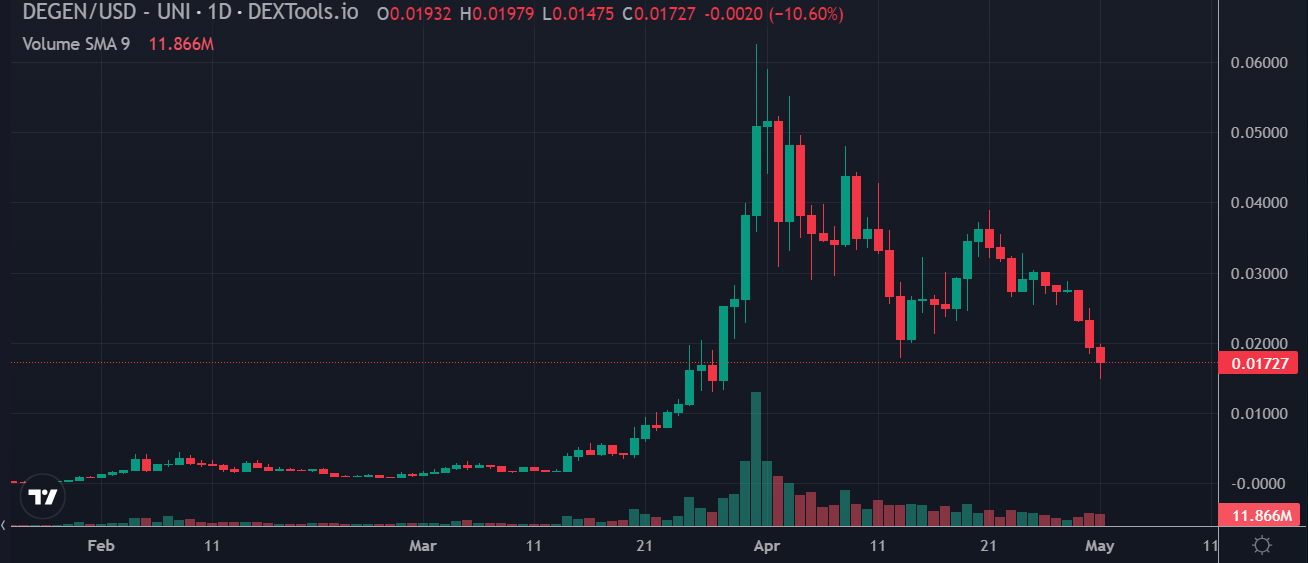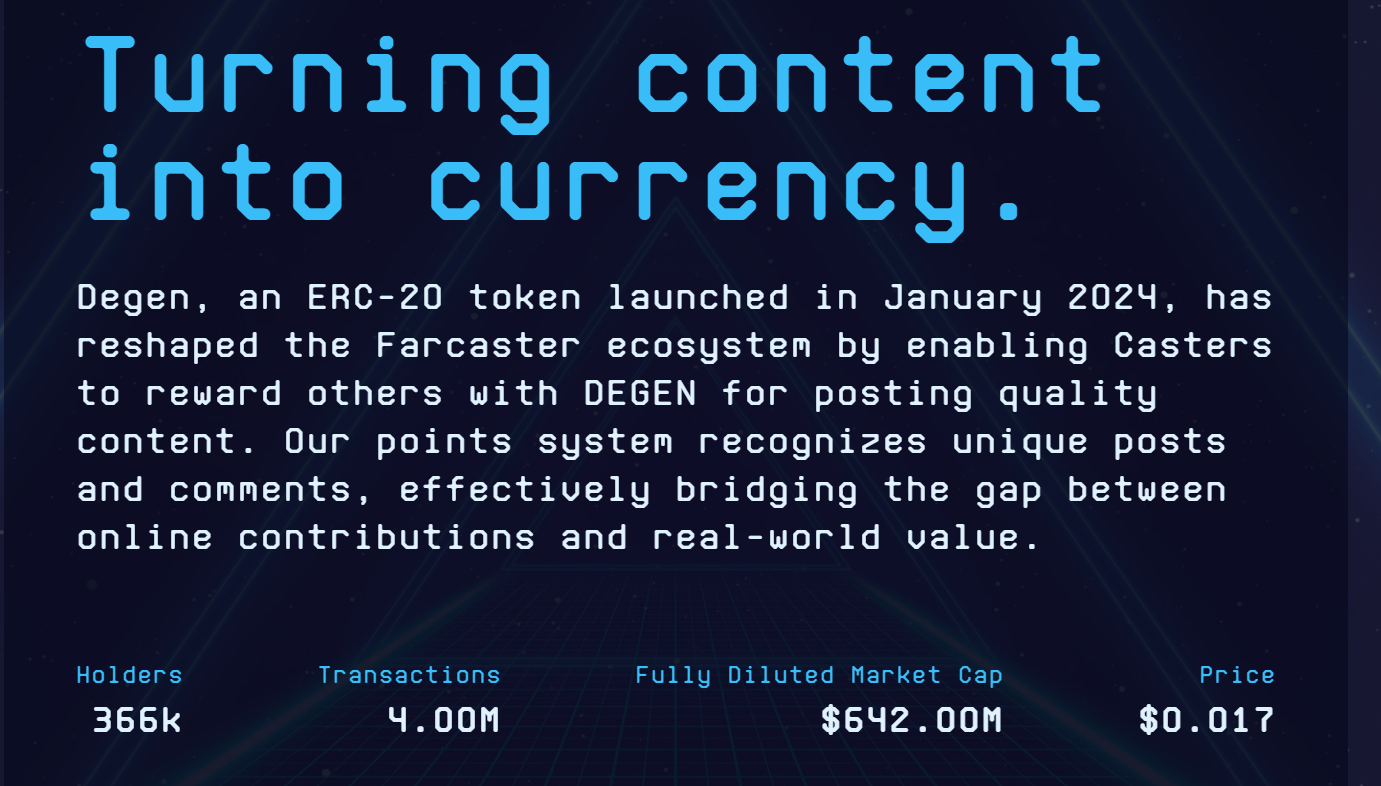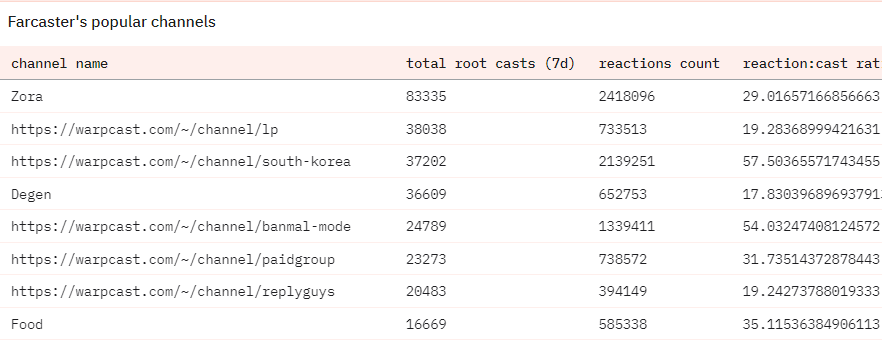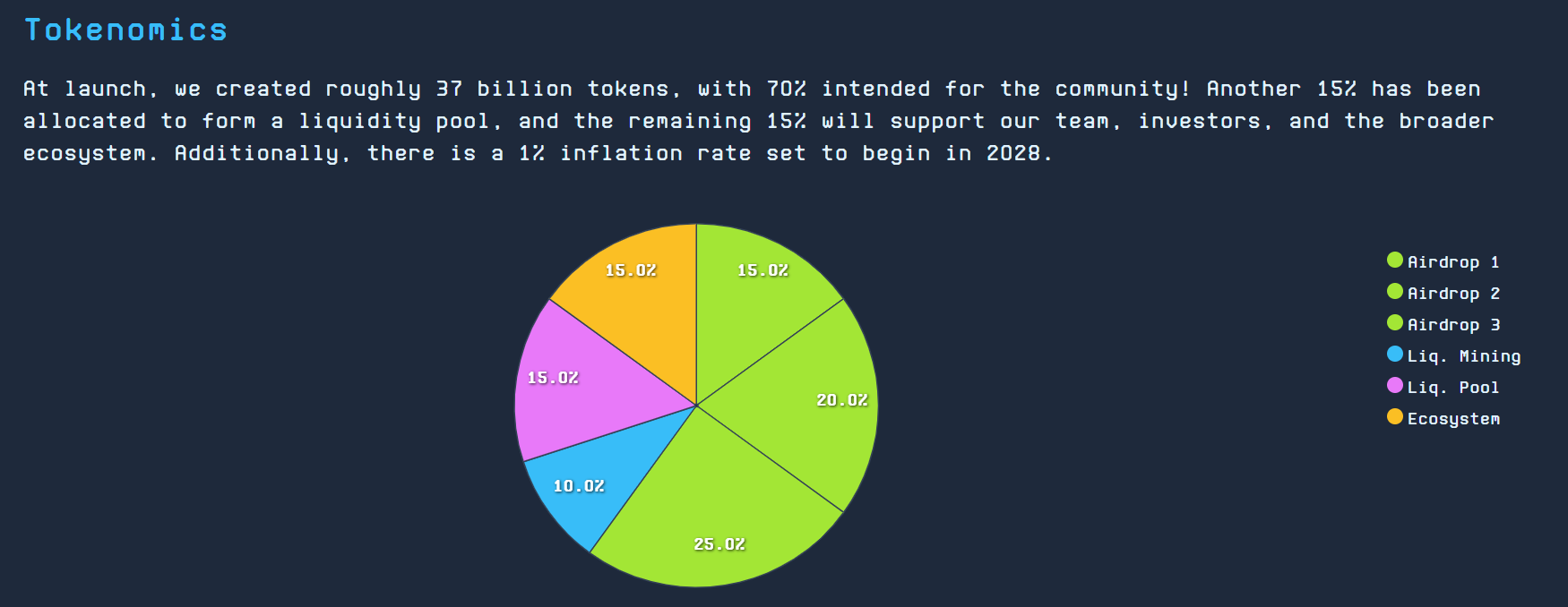
Degen token will probably be studied extensively and serve as a guide to generating traction on social media. The value that this project has created is unquestionable.
It's interesting to analyze what this Token has achieved up to this point, what reasons could explain this phenomenon, and what challenges the project faces to become sustainable.
Degen is currently a token categorized as a Memecoin, and it differs from others in this category as it's the first native to a crypto social network.

One relevant aspect of these social tokens is their distribution strategy. It's so crucial that, in many cases, we find ourselves constantly exposed to tokens arriving in our wallets for free, aiming to artificially boost this metric.
In this case, we have a token that currently has more than 350,000 users, and its acquisition has primarily been through content creation on a social network.
This incentive has been one of the major drivers of Farcaster's growth, capitalizing on the success of this initiative. Farcaster has shown considerable support for this project, such as developing a button with a hat that replaced likes when tipping in DEGEN on this social network.

Having a social network as a distribution channel is probably one of the best strategies to reach many users. Even in these times when these networks are still small, they are becoming very effective as distribution platforms for tokens, as well as applications or projects.
In this sense, the DEGEN project has built its own audience within these networks, which serves as its channel and has long been the most active channel on Farcaster. Currently, among the most active channels on Farcaster, many are built around Social Tokens (Memecoins)


A token that has managed to reach a market capitalization of over 600 million from scratch and is currently facing a significant challenge: how to make the project sustainable.

The project will issue 37 billion tokens in the first phase. In this sense, the design of creating many tokens is much more cognitively comfortable and also generates a greater sense of value. Intuitively, it seems to us that having 10,000 tokens is much more valuable than having 0.0001, even if the price in dollars were the same. Additionally, cognitively, when we talk about decimals, it's difficult for us to know how many a certain amount represents, whereas it's harder for us to make mistakes between 10,000 and 1,000.
This Tokenomics analysis should be conducted in a much deeper manner. However, in these cases, reality moves much faster than the ability to mature these analyses. Token Engineering is one of the most important initiatives on these topics globally, and I recommend studying to obtain the title of Token Engineer. There aren't many people in the world who have passed the five exams necessary to obtain it.
In any case, we will give some insights into the token engineering decisions by analyzing its current supply and demand situation.
The objective of this article is to initiate a debate on how we could make DEGEN more sustainable as a project.
Let's start by analyzing the token supply.
TOKEN SUPPLY
As we mentioned, the initial token supply is 37 billion, although the project leaves the door open for further issuance, which I find to be a smart decision to continue creating value for the project. There is a 1% inflation rate set to begin in 2028.
In the crypto space, there is often criticism of projects being inflationary, but this doesn't necessarily have to be a problem. Allowing for inflation does pose a risk of dilution for token holders. However, it's actually a natural way to create value. In the real world, many companies issue additional shares with the aim of creating much more value than what is being issued.
The crucial aspect is whether those tokens being distributed, whether in the initial issuance or future issuances, create value for the project. Any tokens distributed that do not create value for the project will jeopardize its sustainability.
Are the tokens given as tips to the project creating value?
To answer this question, we should first clarify what contributes value to the project. If we consider reaching more users and strengthening the DEGEN brand as valuable, then I believe we can objectively say that this strategy has been very effective in achieving these objectives so far.
When we give a tip, in many cases, it's to new users who may not be familiar with the project, making it an excellent form of marketing. It's more effective, of course, if these tips are given within the DEGEN channel, as it will promote channel growth and quality, provided the tips are given to quality content.
One of the innovations that DEGEN has brought to the table is the idea that a tipping-based system might lead to better content curation. It's still early to know for sure, but it seems reasonable to think that tipping, with its associated cost (we don't have unlimited tips like we have unlimited likes), forces users to be more selective about the content they promote.
This could allow the DEGEN channel to become one of the channels with the best content. However, there are other dynamics in tips that are not related to content but rather to the sale of NFTs or professional services
Around DEGEN, an ecosystem of users has been created who currently see tips as a form of compensation for their work. Therefore, it's common for these users to receive tips and immediately sell them on the market. It's positive that someone is willing to work for a token whose price they won't know until the end of the month, as the project benefits from a significant workforce. However, it will be important for this work to create long-term value for the project so that the token can reflect it in the price.
TOKEN DEMAND
Why does the token rise? Where does the demand for DEGENs come from?
At this moment, we could primarily identify several fundamental sources of demand.The fist would be from community members who want to have the ability to decide where DEGENs are allocated, and to do so, they need to hold 10,000 tokens.
At the moment, around 17,000 users hold more than 10,000 tokens. This implies that 170 million DEGENs have the demand to decide where tokens are allocated. In a way, this could even be understood as a marketing budget for any individual or company, given that it can't be earned. If we assume that a user has been able to tip an average of 50,000 DEGENs, the value of this budget would be $850.
A portion of the demand may indeed come from the potential increase in this demand. For example, if we were to have 100,000 users holding those 10,000 DEGENs, then the demand due to this factor alone would reach 1 billion DEGENs, which would already represent 8% of the DEGEN issuance.
The second would be from investors who believe that this token could become one of the largest Memecoins in the market and achieve market capitalizations similar to DOGE, which is at 26 billion.
Currently, major exchanges have begun listing DEGEN, but there are still the most important ones remaining.

Regarding demand purely from investors, making it more attractive to them would involve listing it on major exchanges. This would make it easier to invest in the asset, and any branding efforts around the project would help attract new investors.
However, marketing is currently very focused on Farcaster users, and perhaps some budget should also be allocated to building brand awareness outside of this network.
The third source of demand could be from applications targeting Degen holders. Degen has generated a wealth effect among its users who are more predisposed to spending the tokens they have, or even the tokens they can tip. Therefore, at this moment, there are many applications beginning to develop, targeting this audience. This generates some demand.
However, to capitalize on these new applications, the project should be able to capture part of this new activity. This could be achieved by being investors in these projects or by these projects being built on a blockchain that generates fees for Degen.

In this regard, Layer 3 could become an important source of demand for Degen. However, as of today, it's still necessary to transfer DEGEN to this blockchain. Perhaps if they were claimed on this network, there would be much more incentive for the ecosystem to develop on Layer 3 rather than directly on Base.
Most likely, the most important demand the project needs at this moment is from investors. So far, the project hasn't developed any strategy besides liquidity mining to encourage holding DEGEN tokens. Staking strategies have been highly successful, and the ability to hold DEGEN and borrow against them is another important capability to try to minimize the opportunity cost of holding many DEGEN tokens without any return.
Ultimately, the best marketing campaign the project can have is for the token price to increase, as it provides more resources to the entire ecosystem.
It's not easy for the project to break out of the bearish trend at the moment because it dedicates a lot of resources to paying users who are primarily doing branding work for the project. Perhaps it's time to refine spending on all these activities to be more efficient. I believe that enhancing Layer 3 and starting to focus more on the development side, which could also help the project capitalize on its position more, is an option. Even developing its own app could open up more possibilities, or trying to highlight the group within warpcast could add value as well.
It's time to try to align the entire ecosystem to create the greatest value for DEGEN because this project, with everyone's support, has the potential to become the leading Social Token.
STRATEGIES FOR DEGEN
-
Incentivize the development of DeFi projects that can offer returns to Degen holders.
-
Funding projects developed on Degen's Layer 3
-
Minting the tokens on Degen's Layer 3
-
Developing a proprietary application for Degen on Farcaster.
-
Assigning a competition to see who carries out the most impactful physical brand campaign for Degen and rewarding the top 3
-
Purchasing advertisements in Times Square.




评论 (0)